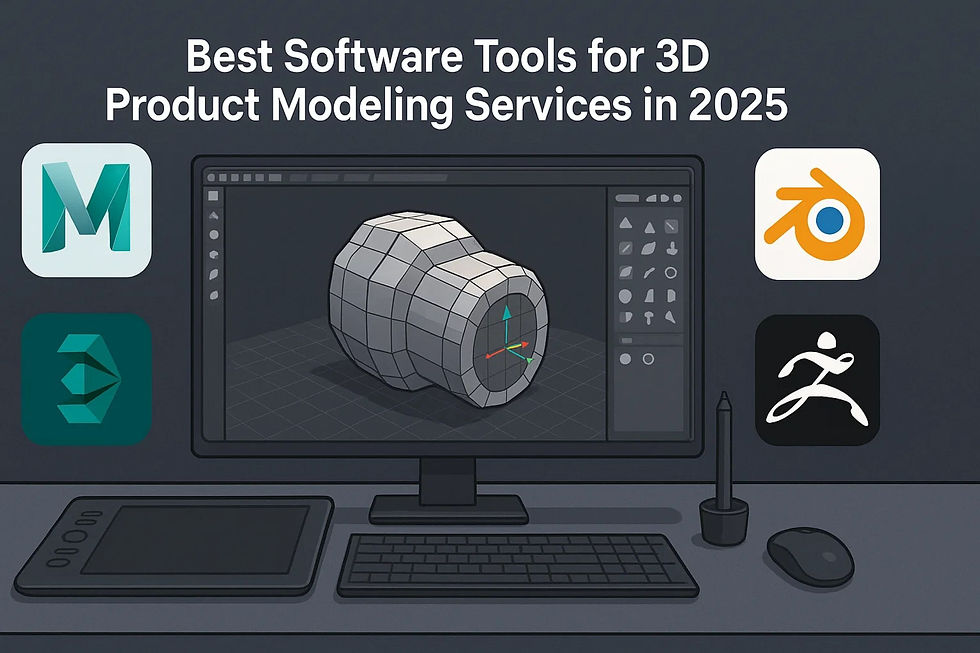Creating a Golf Course Master Plan: Best Practices
- Hemant vizent
- Jun 5
- 4 min read
Golf Course Master Plan
As golf course design evolves in the digital age, visual storytelling is becoming an integral part of planning and development. One of the most effective tools in this realm is a 3D walkthrough of a golf course—an immersive experience that brings layouts and topography to life. Whether you’re showcasing to investors, working with engineers, or attracting future members, a 3D walkthrough enhances clarity and excitement in ways flat maps never could. This blog explores the best practices for creating compelling, accurate, and functional walkthroughs using tools like Golf Course 3D Model, Grading Plans,Cad Service, and more.
Why 3D Walkthroughs Are Game-Changers in Golf Course Planning
Gone are the days when Golf Course Drawings on paper were enough. Stakeholders now expect digital models that simulate every turn, elevation, and hazard. A 3D walkthrough allows designers and clients to virtually "play" the course before a single shovel touches the ground. It can help:
Visualize the terrain based on accurate Cut And Fill Calculations
Understand how the Irrigation Plan Drawing affects different zones
Refine elements in golf course design drawings
A well-made walkthrough aligns the artistic vision with practical implementation and provides a powerful communication tool.
Step 1: Start with Comprehensive Golf Course Drawings
The foundation of every successful 3D walkthrough lies in detailed and accurate Golf Course Drawings. These include:
Topographical maps to understand slopes and contours
Historical data and satellite imagery for site analysis
These initial drawings are essential to determine land usability and to plan logistics for construction, grading, and drainage.
Step 2: Golf Course Master Plan
A Golf Course Master Plan is more than just a conceptual drawing. It serves as the project’s blueprint, guiding the entire lifecycle of the golf course—from grading and landscaping to maintenance. It includes:
Course layout and routing
Traffic flow for carts and maintenance
Clubhouse and amenity placements
Integration of eco-friendly features
Incorporating the master plan into your 3D walkthrough ensures long-term alignment with strategic and ecological goals.
Step 3: Build a Golf Course 3D Model with Accurate Terrain Data
Once the master plan and preliminary drawings are approved, it’s time to begin 3D modeling. Use CAD software and digital elevation models to create a precise Golf Course 3D Model. Key practices include:
Importing topographical data from drones or LiDAR surveys
Using GIS layers to reflect wetlands, vegetation, and soil types
Integrating grading data to reflect slopes and drainage
If you're working with a Cad Service, ensure they specialize in terrain modeling and can interpret Cut And Fill Calculations correctly.
Step 4: Focus on Grading Plan Integration
A Grading Plan plays a critical role in how your 3D walkthrough mimics reality. It dictates how land will be reshaped, influencing gameplay and maintenance. In the model, include:
Contour lines and spot elevations
Drainage channels and berms
Transition zones between tee boxes and the fairways
A walkthrough that integrates the grading plan helps stakeholders see not just the layout, but the underlying landform that supports it. It also ensures realistic slope simulation in your animation.
Step 5: Use CAD Services for Detailing and Engineering Accuracy
Professional Cad Service are essential for refining every detail in the model. This includes:
Drawing precise Irrigation Plan Drawing for water supply zones
Mapping utility lines and electrical layouts
Creating layered files for better rendering performance
Step 6: Perform Cut and Fill Calculations for Cost and Visual Accuracy
Accurate Cut And Fill Calculations are crucial in creating a realistic 3D model. These calculations:
Help maintain balance to reduce earth-moving costs
When visualized correctly in your walkthrough, these changes can dramatically impact the perception of difficulty and beauty of each hole. Designers often tweak these calculations for visual flow, so make sure they are reflected in the 3D model before final rendering.
Step 7: Include Irrigation Plan Drawings to Reflect Course Sustainability
A professional Irrigation Plan Drawing ensures the course remains green without wasting water. These plans should be incorporated into the 3D model to:
Show sprinkler coverage across fairways and greens
Highlight water storage tanks and control points
Model water runoff and absorption zones
Modern walkthroughs can even include animation to show how irrigation works during different seasons, helping planners and environmental consultants visualize long-term water management.
Step 8: Choose the Right Software and Rendering Techniques
To bring your Golf Course 3D Model to life, use software that allows real-time rendering and high-fidelity animation. Popular options include:
Lumion for realistic lighting and terrain shading
Unreal Engine for interactive walkthroughs
SketchUp + V-Ray for architectural visualization
Autodesk Civil 3D for grading and terrain modeling
Choose tools that support CAD imports and can integrate Golf Course Design Drawings, grading plans, and irrigation plans without data loss.
Step 9: Add Realistic Elements and Storytelling
A walkthrough shouldn't feel like a static tour—it should tell a story. Enhance the experience with:
Real-time sunlight and shadow movement
Player POV perspective to simulate gameplay
Audio (birdsong, wind, water flow)
Moving golf carts and ambient animations
This transforms your walkthrough from a technical demo into a cinematic journey.
Step 10: Get Feedback and Iterate
Once the walkthrough is created, review it with stakeholders:
Architects check for visual consistency with Golf Course Design Drawings
Engineers validate it against Grading Plan and CAD service files
Landscape architects assess natural integration
Golf pros evaluate playability from a user experience perspective
Use feedback to refine the model. The best 3D walkthroughs are the result of several rounds of iteration and collaboration.
Final Thoughts
Creating a 3D walkthrough of a golf course is more than a design exercise—it’s a convergence of artistry, engineering, and technology. By integrating key components like Golf Course 3D Model, Grading Plans, Cut And Fill Calculations, and Irrigation Plan Drawing, you create a comprehensive tool that speaks to all stakeholders.
Whether your goal is to win investor approval, get construction buy-in, or excite future players, a well-executed 3D walkthrough is your best asset. When aligned with accurate Golf Course Drawings and supported by professional Cad Service, it becomes more than a visual—it becomes the future of golf course development.






Comments